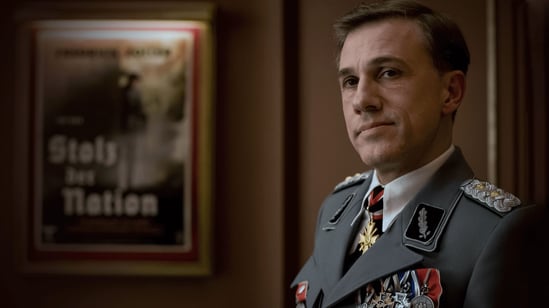Inglourious Basterds: A Symphony of Revenge and Rewritten Histories
Cinemapedia
Quentin Tarantino’s Inglourious Basterds is a cinematic tour de force, blending history, fiction, and Tarantino’s signature storytelling flair into a bold reimagining of World War II. Released in 2009, this audacious film intertwines multiple narratives, weaving a tale of vengeance, resistance, and the transformative power of cinema itself. With a stellar ensemble cast, razor-sharp dialogue, and unforgettable moments of tension, Inglourious Basterds stands as one of Tarantino’s most ambitious and celebrated works.
A War of Many Fronts
The film’s sprawling narrative is divided into five chapters, each contributing to a grand tapestry of revenge and rebellion. The story follows two main threads: the exploits of the Basterds, a group of Jewish-American soldiers led by the charismatic Lieutenant Aldo Raine (Brad Pitt), and the journey of Shosanna Dreyfus (Mélanie Laurent), a young Jewish woman seeking vengeance for the murder of her family by SS Colonel Hans Landa (Christoph Waltz).
As the Basterds embark on a brutal campaign against the Nazis, Shosanna plots her own revenge, setting the stage for a climactic convergence at a Parisian cinema. The film’s alternate-history approach allows Tarantino to craft a cathartic and thrilling conclusion that rewrites the fate of the war in a blaze of cinematic glory.
A Feast for the Eyes
Tarantino’s visual storytelling in Inglourious Basterds is as meticulous as it is striking. Cinematographer Robert Richardson captures the film’s varied settings—from the idyllic French countryside to the opulent interiors of Shosanna’s cinema—with a painterly eye for detail. The use of vibrant colors and dramatic lighting enhances the film’s larger-than-life tone, while the careful framing and camera movements heighten the tension in key scenes.
One of the most memorable sequences, the opening scene at the LaPadite farm, is a masterclass in building suspense through visual and auditory cues. The interplay of light and shadow, coupled with Christoph Waltz’s mesmerizing performance, creates an atmosphere of dread that lingers long after the scene ends.
A Mélange of Musical Brilliance
The soundtrack of Inglourious Basterds is a testament to Tarantino’s eclectic taste, featuring an array of tracks that span genres and eras. Ennio Morricone’s compositions, alongside David Bowie’s "Cat People (Putting Out Fire)" and other carefully selected pieces, infuse the film with a sense of drama and intensity.
Tarantino’s ability to match music to moment is on full display, with each track amplifying the emotional and narrative stakes. The result is a sonic experience that complements the film’s visual and thematic elements, enhancing its impact on the audience.
Vengeance, Justice, and the Power of Stories
At its core, Inglourious Basterds is a meditation on vengeance and the moral ambiguities of war. The Basterds’ brutal tactics blur the line between heroism and savagery, prompting viewers to question the nature of justice. Shosanna’s quest for revenge, while deeply personal, also raises questions about the cost of achieving closure through violence.
The film also explores the transformative power of storytelling, with cinema serving as both a weapon and a symbol of resistance. Shosanna’s use of her theater to strike back at the Nazi regime underscores the idea that stories have the power to reshape reality, a theme that resonates throughout Tarantino’s work.
A Bold and Unforgettable Masterpiece
Inglourious Basterds is a bold and unflinching work of art that defies conventional expectations. Its blend of historical revisionism, gripping performances, and masterful craftsmanship makes it a standout in Quentin Tarantino’s filmography. Christoph Waltz’s portrayal of Hans Landa is a revelation, earning him an Academy Award and solidifying his place among cinema’s most memorable villains.
With its daring narrative, richly drawn characters, and exhilarating set pieces, Inglourious Basterds is a film that celebrates the power of cinema while challenging our perceptions of history and morality. It is a symphony of revenge and rewritten destinies, leaving an indelible mark on the hearts and minds of its audience.


